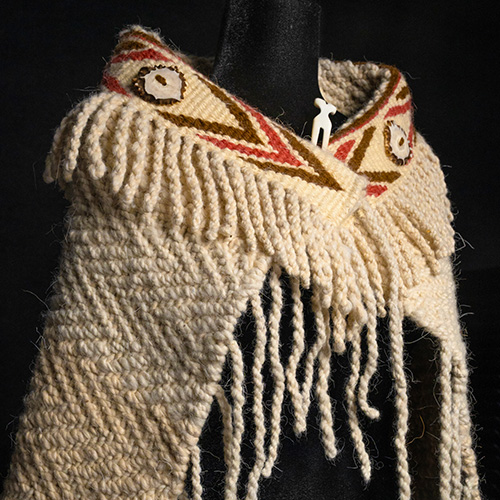When Saya Moriyasu and Maki Tamura completed an artwork for the UW Medicinal Herb Garden earlier this month, it was a homecoming of sorts. The two women had honed their artistic talents as University of Washington undergraduates in the 1990s. Now their artwork is on view as part of Mad Campus, a temporary exhibition on the UW’s Seattle campus.
“To be able to exhibit at my alma mater is such an honor,” says Tamura. “The premise of Mad Campus is large-scale and ambitious, involving many different communities, yet because I felt a strong connection to the site, it didn’t seem daunting.”

Mad Campus, on view through October 25, includes a dozen site-specific artworks. It is the most recent project for MadArt, a privately funded organization dedicated to supporting innovative artists and sharing their work in unexpected settings. Previous MadArt projects have graced neighborhood storefronts, a row of vacant homes slated for demolition, and a park, all in Seattle.
MadArt founder and UW alumna Alison Milliman (BA, Art History), a member of the School of Art + Art History + Design (SOAAHD) Advisory Board, thought the UW campus would be a particularly exciting—and ambitious—site for a MadArt project. Working closely with UW staff, she and MadArt director Tim Detweiler identified potential campus locations and invited several dozen artists to develop proposals. From this group, thirteen artists were selected to create temporary installations, including eight UW alumni and one current undergraduate. “We were looking for artists who were ready to do something bigger, something a little more ambitious than they’d done before,” says Detweiler. “This afforded them the opportunity to push themselves.”
Touring potential sites on campus, Moriyasu (BA/BFA, Art, 1991) and Tamura (BFA, Art, 1996) were immediately drawn to the Medicinal Herb Garden, located across from the Botany Greenhouse. “We both loved the intimate nature of the space, the quirky monkey gate, and the beautiful garden setting,” says Tamura. “We wanted to create a comfortable and intimate space for gathering and relaxing.” Their installation features tree-like stools and tables fabricated in durable concrete, inspired by the region’s old-growth native trees. Small tapestries hanging from ‘branches’ depict the history of the University and the Medicinal Herb Garden.

Artist Perri Howard (BFA, Art, 1996) preferred a more open location. She selected a large expanse of grass in the Quad and created a compass rose formed by flags that capture the wind. “Just as I did as a UW undergraduate, I gravitated to the open spaces on campus where one has an unencumbered view of the sky,” says Howard. “It is truly an honor to be given the opportunity to enter into dialogue with a place that has meant so much over the course of my development as an artist and person.”
In keeping with MadArt’s efforts to support emerging artists, Howard invited four current SOAAHD students to work with her as interns. The students helped fabricate the flags and participated in key decisions about materials and colors. “Working with the students allowed me to propose a much more ambitious project,” says Howard. “Their focus and commitment has exceeded all of my expectations.” Intern Abigael Fry, a double major in art history and interdisciplinary visual arts, particularly appreciated the opportunity to glean Howard’s insights about working in the art world. “Her stories, information, and advice have been great in expanding my ideas for future jobs and paths,” Fry says.
It is truly an honor to be given the opportunity to enter into dialogue with a place that has meant so much over the course of my development as an artist and person.
Students have been involved with Mad Campus in other ways as well. Some have documented the artists’ creative processes through videos shot over the course of several months; others have designed print and online materials and are promoting the project through social media. Students have trained as docents for Mad Campus tours, including a free September 28 Art Walk hosted by Arts Dawgs that will combine tours with opportunities to meet the artists.
“There have been so many points during this entire process where students—art majors, design majors—just fit so comfortably into the process,” says Judi Clark, SOAAHD director of academic advising and student services. “It gives them great background and a really good introduction to the art world.” SOAAHD also plans to integrate Mad Campus into its autumn quarter curricula, with several courses exploring the installations as a jumping off point for discussions of the art world.

With all the artworks now installed, the next milestone will be the onslaught of UW students descending on the Seattle campus for autumn quarter. Mad Campus’s organizers and artists look forward to reaching such a diverse audience.
“It’s not just the art crowd that will be seeing these works,” says Detweiler. “It will be business majors and psychology majors and all the rest. Everyone will be bumping into these pieces all over campus. Once their interest is piqued, our hope is that they continue to explore.”
_____
Mad Campus will run through October 25. A map of the installation locations is available online and at the UW Visitors Center. For information about the artists, artworks, tours, and related information, visit madartseattle.com.
Portions of this article were excerpted from “Art Where You Least Expect It,” Columns magazine, September 2014.
More Stories

A Healing Heart Returns
In February, the UW Symphony will perform a symphony that Coast Salish elder Vi Hilbert commissioned years ago to heal the world after the heartbreak of 9/11. The symphony was first performed by the Seattle Symphony in 2006.

Need a break from holiday movies? Try these
For those wanting a break from holiday movies, Cinema & Media Studies faculty and grad students offer suggestions.

Coast Salish Traditions are "Woven in Wool" at the Burke
A Burke Museum exhibit, co-curated by Coast Salish weavers and Burke curators, highlights the importance of weaving to Coast Salish communities.